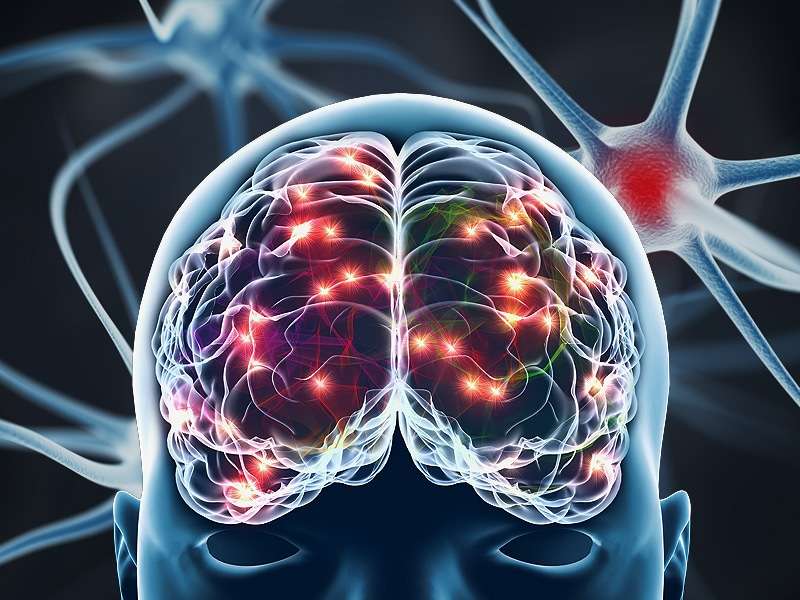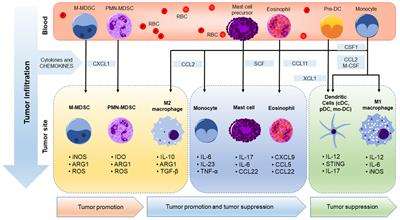Neuroscience surprisingly teaches us that not only is psychotherapy purely biological, but it is the only real biological treatment. It addresses the brain in the way it actually develops, matures, and operates. It follows the principles of evolutionary adaptation. It is consonant with genetics. And it specifically heals the problematic adaptations of the brain in precisely the ways that they evolved in the first place. Psychotherapy deactivates maladaptive brain mappings and fosters new and constructive pathways. Let me explain.
The operations of the brain are purely biological. The brain maps our experiences and memories through the linking of trillions of neuronal connections. These interconnected webs create larger circuits that map all throughout the architecture of the cortex. This generates high-level symbolic neuronal maps that take form as images in our consciousness. The play of consciousness is the highest level of symbolic form. It is a living theater of “image-ination,” a representational world that consists of a cast of characters who relate together by feeling as well as scenarios, plots, set designs, and landscape.
As we adapt to our environment, the brain maps our emotional experience through cortical memory. This starts very early in life. If a baby is startled by a loud noise, his arms and legs will flail. His heart pumps adrenaline, and he cries. This “startle” maps a fight-or-flight response in his cortex, which is mapped through serotonin and cortisol. The baby is restored by his mother’s holding. Her responsive repair once again re-establishes and maintains his well-being, which is mapped through oxytocin. These ongoing formative experiences of life are mapped into memory in precisely these two basic ways.
These two basic modes underlie the mapping of the entire play into memory. A play written through positive attachment and emotions will promote authenticity and love. One written from trauma can generate a darker narrative and psychiatric symptoms. A problematic play affects the very sense of self of the child, his self-worth and value. It also warps the quality of relatedness with other people to one of distrust, emotional removal, and anger.
A play written through positive attachment and emotions will promote authenticity and love. One written from trauma can generate a darker narrative and psychiatric symptoms.
It is our individual genetic temperament that determines the form of psychiatric symptoms, whether depression, anxiety, phobias, hyperactivity, obsessions, compulsions, or psychosis. Deprivation and abuse in one individual may generate depression, while a similar trauma in another may generate a phobic state. One’s temperament is the genetic component in the formation of psychiatric conditions.
Repairing the Brain
The process of psychotherapy specifically and biologically repairs damage done to the play of consciousness. To introduce how we map our experience and how to effect brain change, I’ll use a simple example of neuromuscular learning. This example is about learning to play the guitar. Neuromuscular learning is similar with other musical instruments, sports, dance, or any learned physical activity.
What happens in the brain as you learn to play the guitar chord B7? It requires total attention to separate your fingers in a precise way in order to hold down the strings within certain frets. When you first attempt it, you can’t do it. You have to slowly place each finger on the right fret. The muscles don’t feel like they could get there, hold the position, or get sound out of the strings. And it hurts. It initially requires seconds to finalize the correct hand position. Each finger needs to be placed individually.
As you continue to practice playing B7, it gets a little easier. After a night’s sleep, you try it again, and it is still very clumsy. You still need full conscious attention to get your fingers correctly onto the frets. The sound begins to come out better. But getting there is still very slow. The chord is not, as yet, usable. After 3 days of working at it, you can finally play the chord. Your fingers don’t hurt anymore, and there is better coordination for the hand position. Your hand now operates as a whole unit, without much conscious effort. You no longer have to think about it. You have now mastered the chord. You have established a neuromuscular B7 map in your cortex.
Let’s say you learned the chord using a scrunched-up hand position, and now you want to correct it. In order to do so, you first have to force yourself to stop to using the old hand position. Once again, you have to give full conscious attention to holding your fingers and hand differently. This takes you back to muscular pain, clumsiness, slowness, inability, and frustration, just as it did the first time but not quite as bad. This is required for you to establish a new and different neuromuscular B7 map in your cortex. Once this is established, it operates by using the new map, which will allow you play automatically. The process for brain change involves deactivation—disuse, not using the old brain map; and then creating a new neuromuscular experience to create a newly mapped B7 chord, which is activated.
This describes simple neuromuscular learning and change. In the emotional sphere of the play of consciousness, change and growth are far more complicated. Because the play is written through the amygdala and the limbic system, change has to proceed through feeling. The process of change is called mourning.
The trauma has to be mourned in order to move on to something new and better. Trauma is the hardest of all attachments to mourn.
In psychotherapy, the patient mourns the pains of his life in the context of emotional trust with the therapist. The patient mourns the abuse and deprivation of his life and faces the pain anew in order to deactivate negative linked brain mappings. Elisabeth Kübler-Ross’s five stages of grief accurately describe the processes involved in relinquishing the old play to accept and inhabit a new one. One must go through the following stages: challenge and denial—to be willing to open and feel the pain again. Then one feels the anger at the real source of the abuse; and one feels the sadness at losing old problematic sources of security or feels the pain deprivation itself; and finally acceptance of no longer inhabiting one’s old familiar identity. The trauma has to be mourned in order to move on to something new and better. Trauma is the hardest of all attachments to mourn.
The old play that generates symptoms and suffering was written from trauma, neuronal mappings involving serotonin and cortisol activity and influence in the limbic system, which is involved in emotional experience. Traumatic attachments need to be mourned for them to lose their power and then to be relegated to deactivated memory. In the context of the safe harbor of the therapist, one slowly digests, deactivates, and lays to rest the mappings of the old play; the symptoms and suffering generated by the old play disappear. During the therapy, the patient writes and inhabits a new play of trust and positive emotions and attachment. Here oxytocin is the mediator, rather than serotonin. The process of mourning in psychotherapy specifically repairs the brain in the very way that the original play was constructed.
Is Sigmund Freud in history’s rear view mirror? Is psychotherapy a dying art?
Visiting a psychiatrist today could result in a prescription for a drug or possibly a brain scan if the problem is seen is threatening. But there was a time when more likely than not the prescription would have been psychotherapy — the act of sitting down and talking with a therapist about problems.
Has the practice of couch-based “talk therapy” become obsolete in the wake of advancing knowledge about the brain and mental disorders? Or has it just fallen out of style?
While many prominent psychiatrists have continued to tout the value of psychotherapy, others have expressed doubts about the technique. It does have recognized value; it’s estimated that for mood disorders like depression, psychotherapy works about 60 percent of the time. So we ask the question: Is drug therapy the appropriate default for addressing psychiatric problems.
The answer of course is “it depends.” Views are changing, however, as we come to better understand what goes on during therapy at the biological level. Scientists recently found that in some cases, the work of a “paid friend” may have an impact on a patient’s genes, biology and brain function, and they also identified biological changes that can predict how well talk therapy can work.
In an editorial in Psychiatric Times, Allen Frances, emeritus chairman of psychiatry at Duke and former chair of the Diagnostic and Statistical Manual (DSM-IV) task force, wrote that “Psychotherapy works at least as well as drugs for most mild to moderate problems and, all things being equal, should be used first.”
 And the American Psychological Association, while acknowledging that drug therapy has been used more and more often over the past several decades, still maintains that “talk therapy” can sometimes be more useful than more biologically based drug therapy.
And the American Psychological Association, while acknowledging that drug therapy has been used more and more often over the past several decades, still maintains that “talk therapy” can sometimes be more useful than more biologically based drug therapy.
A number of studies have shown some biological changes that arise from therapy, some genetic variations that can dictate how well therapy may work and genetic variations that exist exclusively in some psychological conditions.
What does this spate of findings suggest about the benefits and limits of psychotherapy?
Where it came from, what it does
Psychotherapy, as practiced in today’s psychiatrist’s or psychologist’s office, is often a way for someone who has intractable troubles that may have non-biological dimensions (losing weight, quitting smoking, depression, anger, anxiety, etc.) to develop a relationship with a counselor. Techniques are used so that the two can find successful ways for the patient to cope. Three key factors are part of any psychotherapy approach: attachment (emotional engagement between the patient and practitioner), empathy (understanding and articulating the patient’s perspectives), and ultimately, fear extinction (the ability to face and overcome psychological obstacles).
Psychotherapy first arose in practice (as far as we know) in 1880, when a doctor named Joseph Breuer used it on a female patient who called it a “talking cure” and “chimney sweeping.” Breuer abandoned the use of the technique, but one of his students, Sigmund Freud, expanded on the practice, essentially founding the modern psychiatric movement. By the early 20th century, nearly every American practitioner was using some form of talk therapy.
However, whether Freud succeeded at making psychotherapy a scientific exercise is still somewhat up for question. Some psychiatrists and biologists have pointed to Freud’s theories as having no basis in the biology of the brain, and looked instead at more biological answers to mental disorders. However, since the biological basis of behavior hasn’t exactly been revolutionizing our understanding of mental disorders, “talk therapy” remains.
Freud, for his part, never gave up believing the biological basis of his theory:
The deficiencies in our description would probably vanish if we were already in a position to replace psychological terms by physiological or chemical ones. Biology is truly a land of unlimited possibilities. We may expect it to give us the most surprising information and we cannot guess what answers it will return in a few dozen years to the questions we have put to.
Biological basis?
It’s taken much more than a few dozen years to get remotely close to the point Freud had hoped for, but we are getting closer:
- Scientists have discovered several neurochemical and physiological events underlying the three pillars of psychotherapy (attachment, empathy, and fear extinction). Oxytocin, arginine vasopressin and the mu-opioid receptor all play a role in controlling attachment, while receptor genes for oxytocin and the arginine receptor, as well as activity in the anterior cingulate cortex and superior temporal sulcus regulate empathy. Fear extinction appears regulated by the neurotransmitter NMDA, and activity in the hippocampus, amygdala, and other brain regions. Antagonists (or agonists) of neurotransmitters may help enhance the effects of psychotherapy, researchers speculate.
- A British and Australian study of children receiving psychotherapy for anxiety disorders responded differently to the therapy, depending upon the allele of a serotonin transporter gene promoter they carried. Children with one genotype (the “short short” variety of the promoter) were significantly more responsive to behavioral therapy than those with another, “long” version.
- Another British review noted a number of studies linking the success or failure of psychotherapy to a large number of neurotransmitters, proteins and other biological events in the brain. The reviewers also noted that current studies are too small to demonstrate whether any certain gene variant is powerful enough to alter the course of a mental disorder, or whether the right genes are being studied.
These studies have prompted biologists and psychologists to look at whether genetic variation and environmental influences can provide biomarkers of a sort, predicting whether a certain psychotherapy technique could be effective. Further, psychotherapy could be enhanced by combining “talk therapy” techniques with drugs, genetic testing, and other neurobiological tools to treat mood, anxiety, or other psychological disorders. There’s even a new name for this new field: “therapygenetics.”
Maybe Freud’s dream wasn’t just a dream, after all.
Andrew Porterfield is a writer, editor and communications consultant for academic institutions, companies and non-profits in the life sciences. He is based in Camarillo, California. Follow @AMPorterfield on Twitter.




